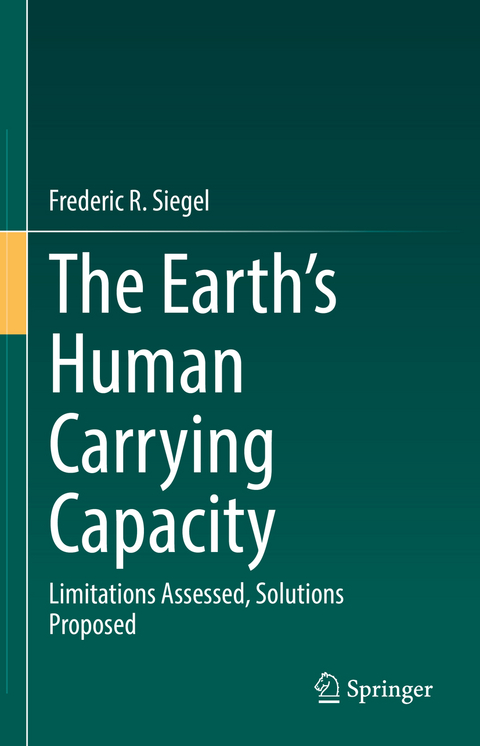
The Earth’s Human Carrying Capacity
Springer International Publishing (Verlag)
978-3-030-73475-6 (ISBN)
The purpose of the book is to provide those in decision-making roles and those that advise them with a sound set of facts and figures to think about to support their decisions/actions. A secondary purpose is to present data that stresses the need to act now, firmly and with investment to plan to adapt to changing conditions rather than wait until forced to do so. The book also discusses how the COVID-19 pandemic has affected the world's societies and how they have reacted. The book will be of use to students in first/second year of college/university programs in Environmental Sciences/Studies, demographics, and ancillary fields such as agriculture science, urban/land use planners, political science, public health, and consultants at academic and professional levels.
lt;p>Dr. Frederic R. Siegel is Professor Emeritus at The George Washington University. His books Applied Geochemistry (1974), Geoquimica Aplicada (1991), Natural and Anthropogenic Hazards in Development Planning (1996), Environmental Geochemistry of Potentially Toxic Metals (2001/2002), Demands of Expanding Populations and Development Planning (2008), Countering 21st Century Social-Environmental Threats to Growing Global Populations (2015), Mitigation of dangers from Natural and Anthropogenic Hazards (2016), Cities and Mega-Cities (2018), and Adaptations of Coastal Cities to Global Warming, Sea Level Rise, Climate Change and Endemic Hazards (2020) reflect Dr. Siegel's cumulative teaching and research experience in theoretical and applied exploration and environmental geochemistry, and his work to alleviate or eliminate environmental problems related to physical, social, chemical, and economic conditions associated with planned development projects.
Chapter1.- Earth's Human Carrying Capacity: The Basics.- Chapter2.- Water: A Limit On Our Earth's Carrying Capacity.- Chapter3.- Food Security/Insecurity, Food Systems.- Chapter4.- Impact of Global Warming/Climate Change On Food Security 2020.- Chapter 5.- Sanitation: Waste Generation/Capture/Disposal Status 2020.- Chapter6.- Access To Natural Resources Not Water Or Food 2020.- Chapter7.- Global Warming And Water 2050: More People, Yes; Less Ice, Yes; More Water, Yes; More Fresh Water, Probably; More Accessible Fresh Water.- Chapter8.- Food 2050 - More Mouths To Feed: Food Availability and Access.- Chapter9.-Sanitation 2050.- Chapter10.- Natural Resources Beyond Water And Food 2020 To 2050.- Chapter11.- Economic Realities in 2020 Populations: What do they Portend for 2050? 2100?
| Erscheinungsdatum | 04.08.2021 |
|---|---|
| Zusatzinfo | XIII, 154 p. 3 illus., 2 illus. in color. |
| Verlagsort | Cham |
| Sprache | englisch |
| Maße | 155 x 235 mm |
| Gewicht | 378 g |
| Themenwelt | Naturwissenschaften ► Biologie ► Ökologie / Naturschutz |
| Naturwissenschaften ► Geowissenschaften | |
| Technik ► Lebensmitteltechnologie | |
| Schlagworte | Carrying Capacity • food security • global warming • natural resources • Sanitation • sustainability • water availability |
| ISBN-10 | 3-030-73475-7 / 3030734757 |
| ISBN-13 | 978-3-030-73475-6 / 9783030734756 |
| Zustand | Neuware |
| Haben Sie eine Frage zum Produkt? |
aus dem Bereich


